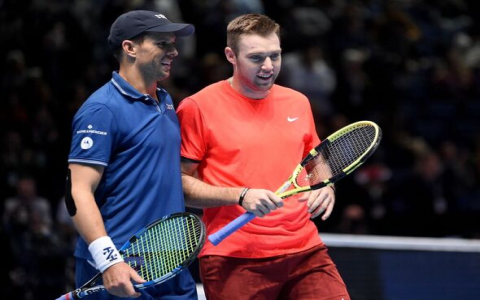Okay, here’s my take on sharing a practice involving Katie Boulter and Jack Sock, like a blog post from a seasoned enthusiast:

Alright folks, let’s dive into something I was tinkering with the other day – Katie Boulter and Jack Sock! No, I didn’t bump into them at Wimbledon (though that would’ve been cool!), I was actually experimenting with some data analysis stuff, looking at their playing styles and seeing what I could dig up.
It all started when I was trying to brush up on my data manipulation skills. I figured, what better way than to analyze tennis data? It’s readily available online, and you can get some really interesting insights if you know where to look. So, I grabbed some match statistics for both Katie Boulter and Jack Sock from a few different tournaments. I used a combination of web scraping and existing datasets from some tennis stats websites.
First up, I wanted to get a sense of their strengths. For Boulter, I focused on her serve. I looked at things like average serve speed, first serve percentage, and number of aces per match. It involved cleaning the data, you know, getting rid of the irrelevant rows and columns. Then, the real fun began – calculating the averages, standard deviations, and creating some visualizations. I mainly used Python with Pandas and Matplotlib for this. Nothing too fancy, but it gets the job done.
Sock’s game is a bit different, right? Known for his forehand and net play, so I went after that. I was trying to quantify his forehand effectiveness: number of forehand winners, unforced errors on the forehand, and so on. And the net play, that was a bit trickier. I had to look at things like success rate at the net (how many times he won the point after approaching the net), and also how often he was passing at the net. This required a lot more data wrangling, because some of these stats aren’t always readily available.
What I discovered? Well, for Katie Boulter, her serve is definitely a weapon. When she’s on, her first serve percentage is high, and she can rack up a decent number of aces. But, the consistency is the key, and that’s where I noticed some fluctuations. Sock, on the other hand, when his forehand is firing, he’s dangerous. The data backed that up pretty clearly. But unforced errors can be a killer. I also saw a correlation between his net approaches and match outcomes; when he’s confident coming to the net, his win rate goes up.

Now, I took it a step further. I compared their stats against some of their opponents, particularly in matches they won and lost. This helped me identify specific areas where they excelled or struggled. For example, in matches where Boulter’s serve percentage dropped below a certain threshold, she tended to lose more often. Similarly, when Sock’s forehand error count spiked, his chances of winning decreased significantly.
The takeaway? Well, it’s just a data driven look at two players’ strengths and weaknesses. This was more of a coding/data analysis exercise for me. I’m thinking of trying it with some other players and maybe building a small model to predict match outcomes based on these stats. That’ll be the next project. Stay tuned!
- Data Collection
- Data Cleaning
- Statistical Analysis
Hope that was insightful! I had a blast doing this, and I’m always up for sharing my experiences and code snippets if anyone’s interested. Let me know in the comments!







